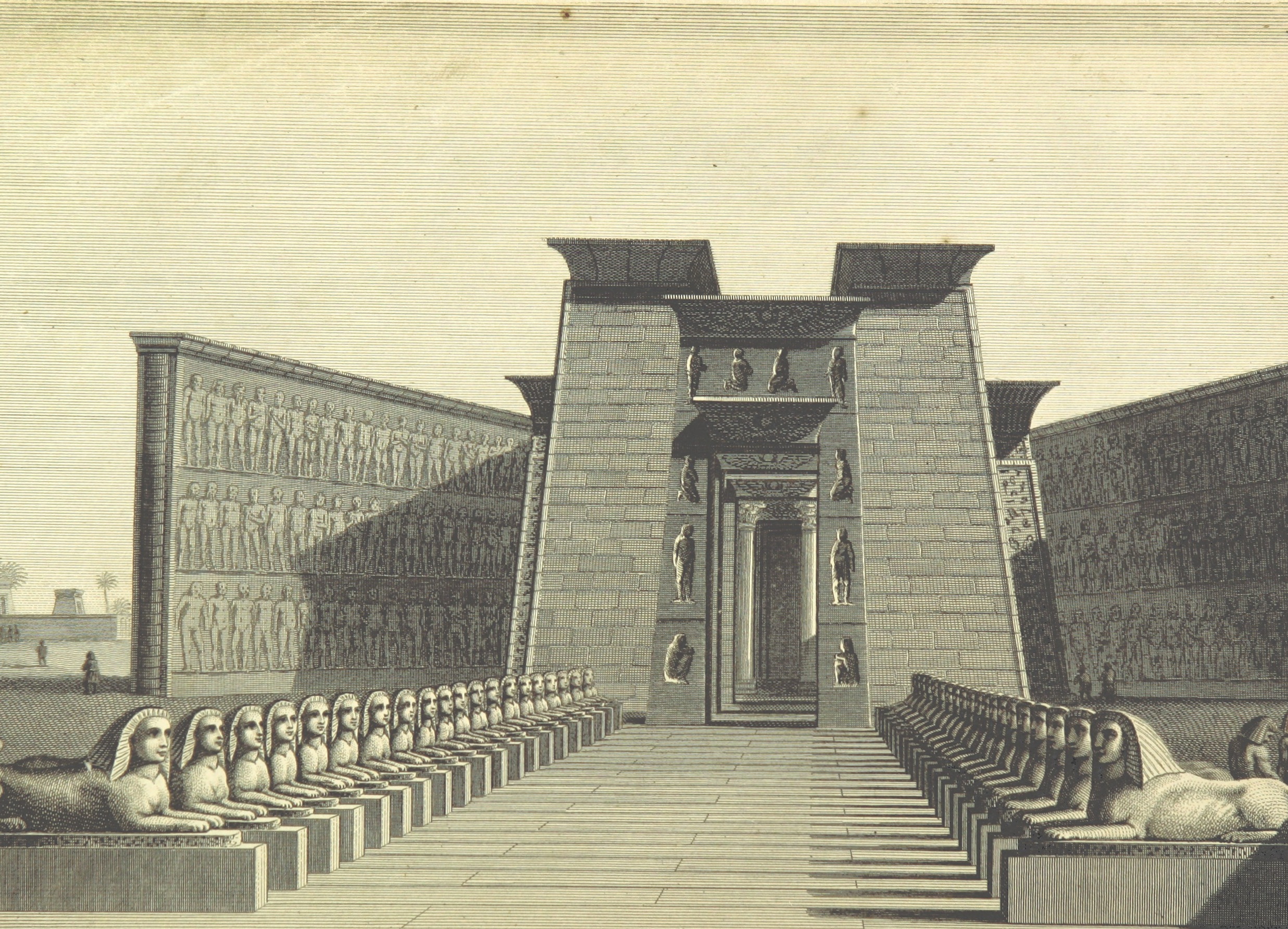Noldutt
The walls were worn and cracked but they felt as solid and reassuring as a fortress. The stillness that filled the great hall was a comforting embrace with only the quiet whispers of men and women in prayer to fill the air. This was the holy Noldutt I had been regaled with story and tale of. It felt like here, time had never moved on.The Noldutt is the most holy temple of the Wa'Senet people; built in the early days of their culture by the ancient Pahlir kings around 2000 RC, it has stood for over 5,000 years. Once a temple to the ancestral gods of the Wa'Senet, it has served as a Temple of the One and Six Gods for nearly a thousand years. It is the seat of one of the six Great Priests of the religion, and the most important temple of northern Sura. The original structure was far more modest than the great facade that now stands, which was erected in the mid 800s YSB by the Kibmehhk dynasty. The inner sanctum of the modern temple consists of the rooms of the original most ancient building. Traditionally, pilgrimages are made by the people of northern Sura to the temple during the Festival of Flowers every five years. Pilgrims bring a sapling, cutting or seed from their native lands to present to the temple, and the great temple gardens are planted with many exotic plants given during this festival, watered by reservoirs fed from the river Tajut.
Architecture
The Noldutt is built in ancient Wa'Senet style; it is a titanic structure, formed of large slabs of stone carved precisely and fitted without mortar. The facade of the temple is deceptively angled, with carved decoration, and an overhanging, flat roof. The exterior is repainted with murals regularly, for its carvings have long been worn down.
An avenue of carved statues leads to the Noldutt's great door of bronze, which open into a receiving chamber framed by columns. Beyond, a great hall is positioned. Here in alcoves are carved statues of the One and Six, and prayer mats fill the room for petitioners to plead their case to the gods. Doorways off the great hall lead to numerous chambers beyond; the temple proper includes numerous private shrines, the tombs of the Suran Emperors and the old kings of Senet'tu, archives of sacred objects, private conference rooms. Underground tunnels lead to outer buildings where libraries, residential complexes for priests, store rooms, kitchens and treasuries are held.
History
The Noldutt began life as a simple temple to the ancestral gods of Senet'tu but it gained its significance quickly. It was elevated to the most important temple of the ancestors no more than a century after it was built after receiving patronage of the royal family. The first ruler of Senet'tu had been buried in its crypts by 870 RC, where previously rulers had been buried at the Weanirth.
When the city was largely abandoned, the Noldutt remained the one inhabited area of the city, as the sacred temple of the priests of Hetu and Ahuronsu. Pilgrimages were made by the civilian population from the newer neighboring cities, to the temple.
During their revitalisation of Senet'tu, the Noldutt was expanded and renovated by Kibmehhk dynasty as the center of their growing empire's religion. An important showpiece and statement of their fidelity to the gods, upon the completion of the renewal its image was impressed on coins minted by the dynasty. The Kibmehhk hoped to convert Sura to the way of their gods and used the Noldutt as a symbol of this, but ultimately they never succeeded.
It persisted as the center of ancestor worship until 2140 YSB when Sura instated a merger of the religions of the Wa'Senet and the Suran people, hoping for a unification of their empires disparate cultures by identifying their disparate gods as the same by different names. The Noldutt was given high importance and made the chief temple of Sesothris, the earth goddess of Wa'Senet belief who had been adopted by Sura.
Sesothris' worship later moved to a purpose built temple within Senet'tu in 2745 YSB, but the Noldutt has remained the high temple of the north since.
Type
Temple / Church
Parent Location
Owner
Owning Organization





Comments
Author's Notes
This article was written for the Sacred Sites WorldAnvil challenge in May 2018.